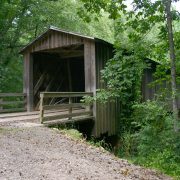4 Facts about Elder Mill Covered Bridge
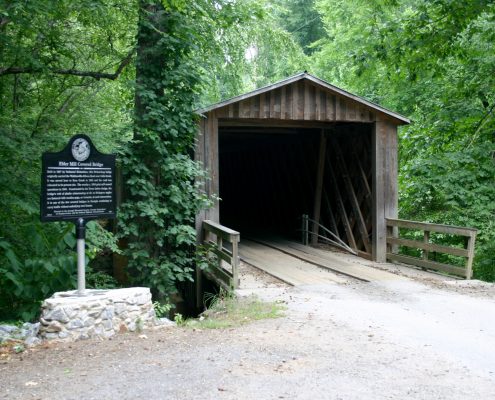
The Elder Mill Covered Bridge is one of 13 functioning covered bridges left in Georgia.
Oconee County’s Elder Mill Covered Bridge is one of Georgia’s 13 covered bridges that carries traffic. The bridge is a popular attraction in Watkinsville, and is the only covered bridge featured along Georgia’s Antebellum Trail. Check out these four facts about the bridge, including some of the notable people who influenced the bridge.
1. The bridge once connected Watkinsville and Athens
Before its move to Elder Road off of Highway 15 in 1924, the Elder Mill Covered Bridge connected Watkinsville and Athens-Clarke County. The two neighboring cities share a long history, as Watkinsville initially served as the county seat of Clarke County before the founding of Oconee County in 1875. Watkinsville is only a stone’s throw from Athens, with Clarke and Oconee sharing the city of Bogart and some parts of Athens existing within the county lines of Oconee.
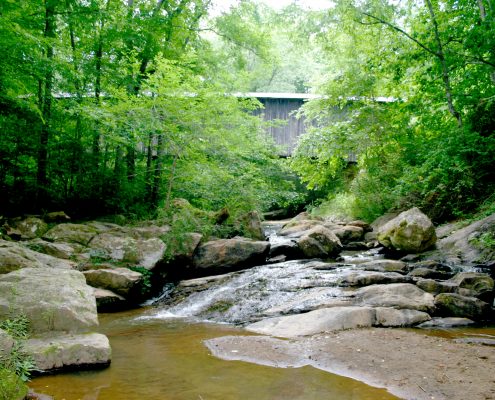
Once connecting Athens and Watkinsville above Calls Creek, the bridge now sits above Rose Creek.
2. Its structure is known as Town’s Lattice Truss
Most of America’s covered bridges were built between 1825 and 1875. The maker of the Elder Mill Covered Bridge, Nathaniel Richardson, built the bridge in 1897 using Town’s lattice truss form, which was patented by architect Ithiel Town in 1820 and 1835. The structure utilizes a large number of smaller planks for easy labor. The Elder Mill Covered Bridge is one of the few covered bridges in the state that carries traffic without the additional support of steel beams.
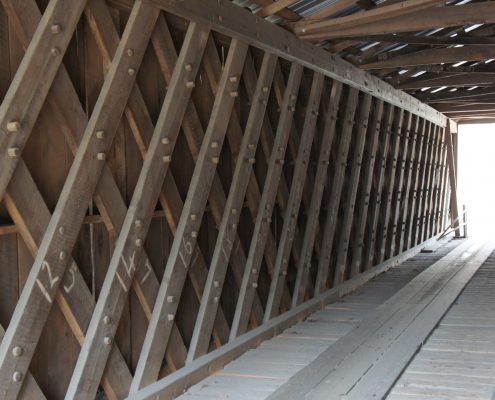
The bridge was built in 1897 by Nathaniel Richardson using Town’s lattice truss structure.
3. The bridge was saved with funds granted by former U.S. President and Georgia Governor, Jimmy Carter
In 1974, the bridge endured termite damage and was deemed unsafe for traffic. An Oconee resident who oversaw much of the upkeep and traffic of the bridge reached out to former President Jimmy Carter, Georgia’s governor at the time, and received $2,500 to repair the bridge. Three years later, President Carter began his presidential term, serving until 1981.
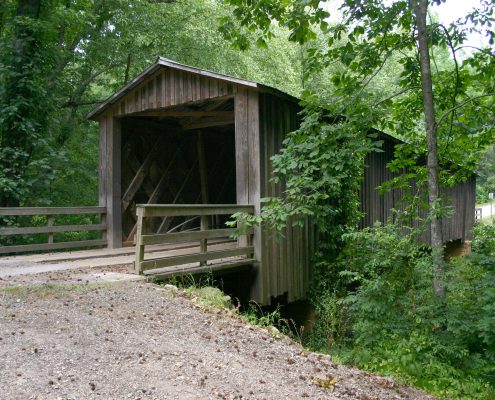
The Elder Mill Covered Bridge provided access to the Elder family’s mill in 1924.
4. It’s named after the family of David Elder, soldier in the Revolutionary War
David Elder, born in Brunswick County, Virginia, arrived in Oconee County after his military service during the Revolutionary War granted him land in Oconee County. Descendants of the family have lived in Oconee County for more than 200 years, long after his death in 1853. After the bridge’s move from Calls Creek, the bridge provided access to the family’s mill—Elder Mill (hence the name of the bridge and road the bridge sits on). David Elder’s memorial stone can also be found along Highway 15 in the Elder Cemetery, approximately 2 miles from the covered bridge.
Sources: Athens Banner-Herald & Georgia House Resolution 224

